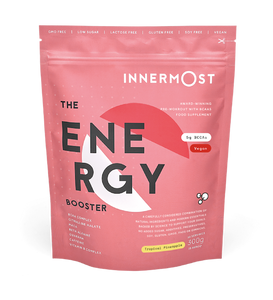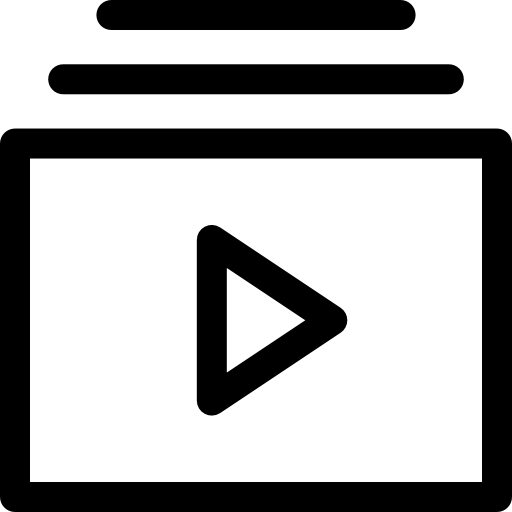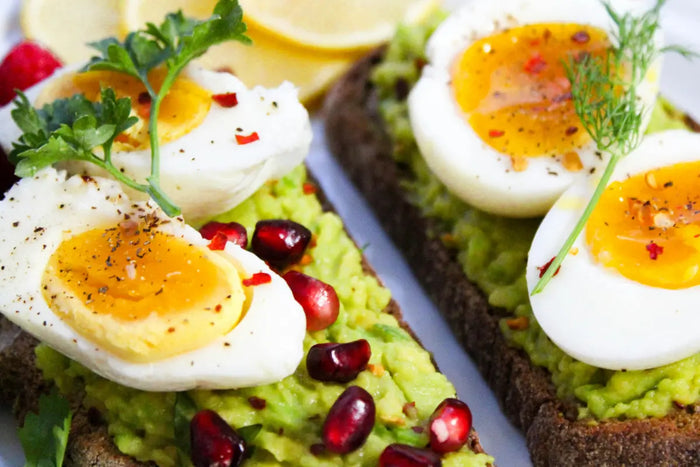Whether you’re a complete novice when it comes to strength training or think of yourself of a big of a seasoned pro, you’ve probably come across the idea of the anabolic window. Sometimes referred to as the anabolic phase, or sometimes even the anabolic state, if it “really exists”, to some extent or the other, could be great for those trying to reach a particular fitness goal.
As we said, the idea of the anabolic window has hugely positive consequences, but there is a huge amount of controversy and debate around the subject. Questions around the ideology are rife in the fitness community, and include some of the following:
- Is the anabolic phase real?
- Does the anabolic window exist?
- How long is the anabolic window?
In true Innermost fashion, we’re here to get you all the facts, debunk all the myths, and consider all of the evidence around the anabolic state.
And at the end of all that, we’ll definitely be in a great position to decide whether we should be considering utilising this potentially lucrative time period after our precious workouts after all. But before that, let’s get the basics out of the way, and give you the low down on this controversial state. That… may or not be real. On with the show!
What is the anabolic window?
The anabolic window describes a time when (supposedly) muscle tissue is in a state of enhanced sensitivity. As a result, the anabolic theory states that you should be packing in the nutrients (and protein) pretty sharpish after a workout.
The theory surrounds the idea that the time immediately after a workout is the period in which your muscle tissue is in active repair and recovery mode, and so the more nutrients and protein you consume, the greater impact this will have on your recovery and growth. Sounds pretty straight forward, right?
How long is the anabolic window?
One of the biggest questions that surround the supposed anabolic window is a big one: “how long is the anabolic window?”.
The length of time that your body is in an anabolic state is up for debate, with some studies claiming that the period lasts around thirty minutes, and other experts suggesting that this window lasts for up to three hours. If you want to get really pedantic and specific, some have even suggested that the peak time for this nutrient haul is between two and three hours after your strength training workout.
What are the benefits of using the anabolic window?
If the anabolic theory is true, the utilisation of this period could bring some pretty hefty health benefits, leading to a great boost in performance and ultimately increasing your chances of reaching that all-important fitness goal.
Benefits of the anabolic window include:
- Maximises your workout
- Boosts nutrient absorption
- Helps maintain a healthy diet
- Improves muscle recovery speed
We know what you’re thinking. Whilst this all sounds good and well, does the anabolic window really exist?
Studies into the anabolic state
One study published in the Journal of Orthopaedic and Sports Physical Therapy discussed the importance of nutrient timing, particularly around particular workout periods. The investigation analysed various research that has evaluated the existence and potential effectiveness of the utilisation of this anabolic window, through a comprehensive literature review of the existing studies in the area.
The investigation found that whilst the impact of high nutrient intake immediately following exercise was found to have notable impact on health, performance, and exercise, they were unable to ascertain whether this impact was felt purely as a result of adequate protein intake and the existence of a healthy diet, or as a result of this consumption directly after a workout.
On the other hand, an investigation into the effectiveness and existence of the anabolic window conducted by Witard and Tipton (2014) provided evidence to support the window, suggesting that from a “practical standpoint” athletes and similar individuals that regularly partake in exercise should absolutely make use of the anabolic window, consuming nutrients and protein in the immediate window after exercise to adequately aid recovery.
Summary
It’s clear that research into the anabolic window is still developing, leaving a lot to consider. Whilst the findings of the above studies are somewhat inconclusive so far, we think that it’s always best to recharge and refuel after a workout and would definitely recommend following this kind of routine when it comes to post-workout recovery.
There’s definitely enough evidence in the fitness community to suggest that the anabolic window exists – at least to some extent, so we recommend getting a nutritious post-workout snack or dose of The Strong Protein in after a day of strength training to maximise your results and aid in your recovery.
Every little helps, right?
References
- Aragon, A. A., & Schoenfeld, B. J. (2013). Nutrient timing revisited: is there a post-exercise anabolic window?. Journal of the international society of sports nutrition, 10(1), 1-11. Click here.
- Schoenfeld, B. J., & Aragon, A. A. (2018). Is there a postworkout anabolic window of opportunity for nutrient consumption? Clearing up controversies. journal of orthopaedic & sports physical therapy, 48(12), 911-914. Click here.
- Witard, O., & Tipton, K. (2014). Defining the anabolic window of opportunity. Is protein intake immediately post resistance exercise critically important for muscle growth?. Agro Food Industry Hi Tech, (2), 10-13. Click here.


















